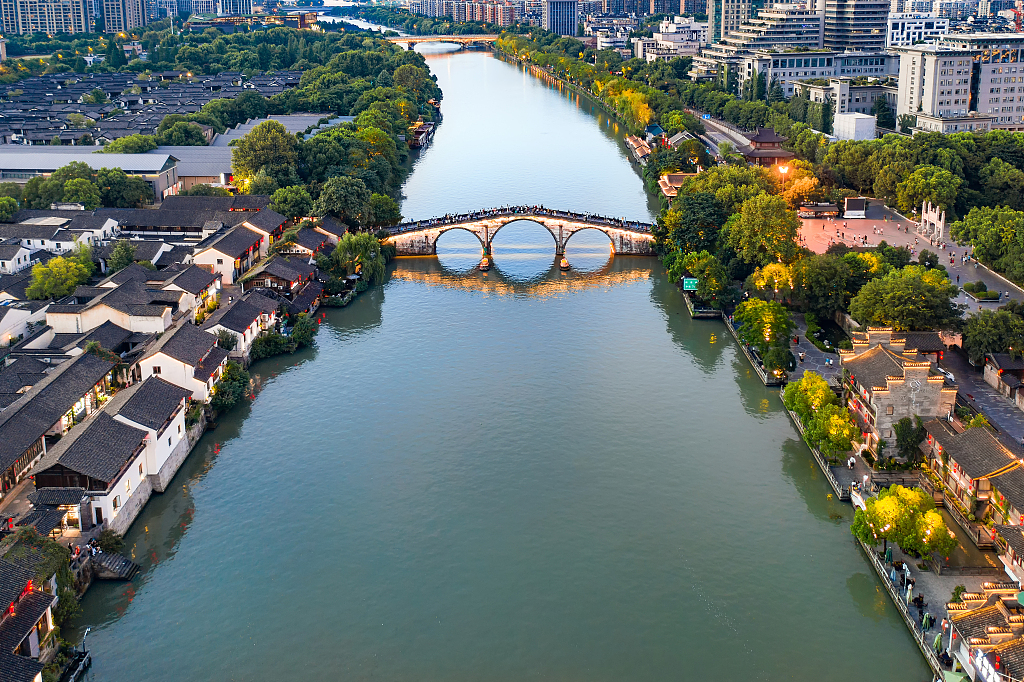

The Grand Canal, built in the 5th century BC, is a vast waterway system running from Beijing in the north to Zhejiang Province in the south. Around 9,000 kilometers away from Beijing, in Italy, the 2,300-year-old Appian Way connects Rome to the city of Brindisi in the southeast. The two ancient transport routes were once significant national thoroughfares, with some sections still in use today.
The Grand Canal was inscribed on UNESCO's World Heritage list in 2014 and local authorities along the waterway have been working on environmental protection efforts and cultural park building for years. Coincidentally, the Appia Regina Viarum Project was launched in 2016 with around $22 million investment to restore the Appian Way for walking again. The ancient road is in a bid for a World Heritage status.
Grand Canal
As the world's longest manmade waterway, the Grand Canal starts in the capital Beijing, passing through Tianjin, Hebei, Shandong and Jiangsu, and flows in to Zhejiang's Hangzhou City. Originally built for military use, the waterway has been serving as the backbone of China's inland communication system since the Sui Dynasty (581-618), transporting grain and strategic raw materials, and supplying rice to feed the population.
The canal has played an important role in ensuring the country's economic prosperity and stability and also helped facilitate cultural exchange between north and south China.